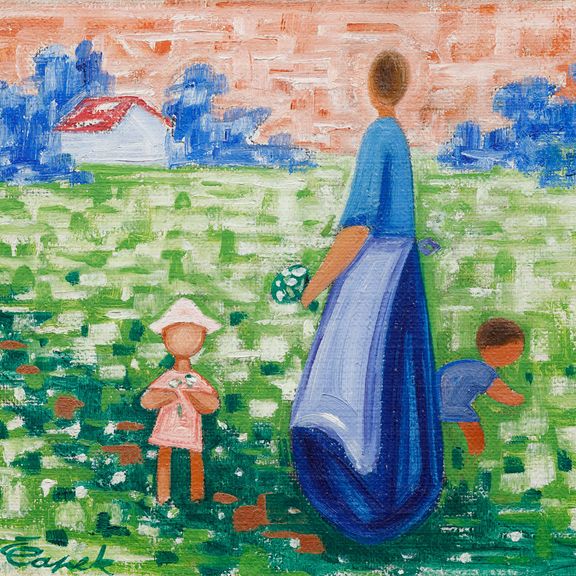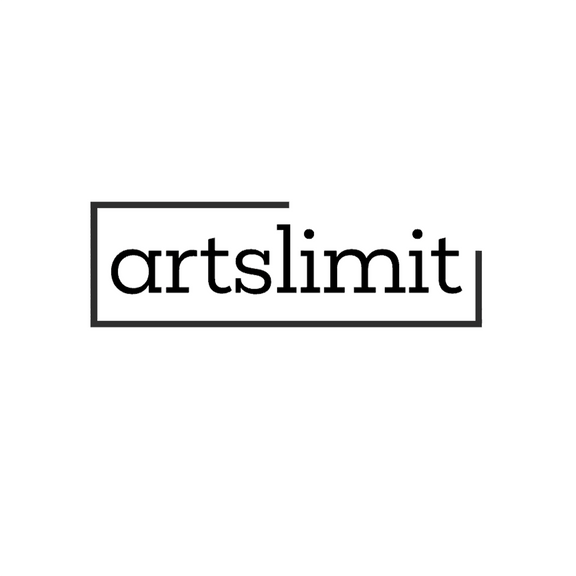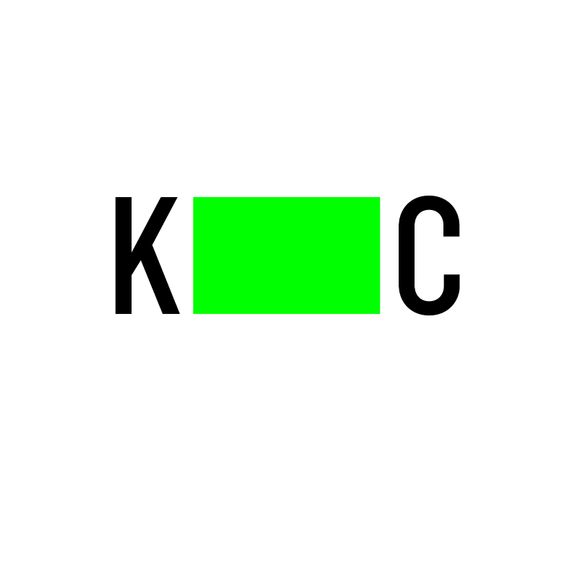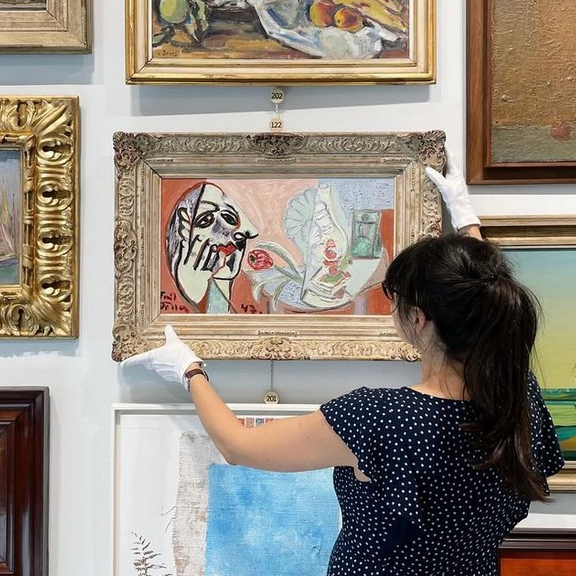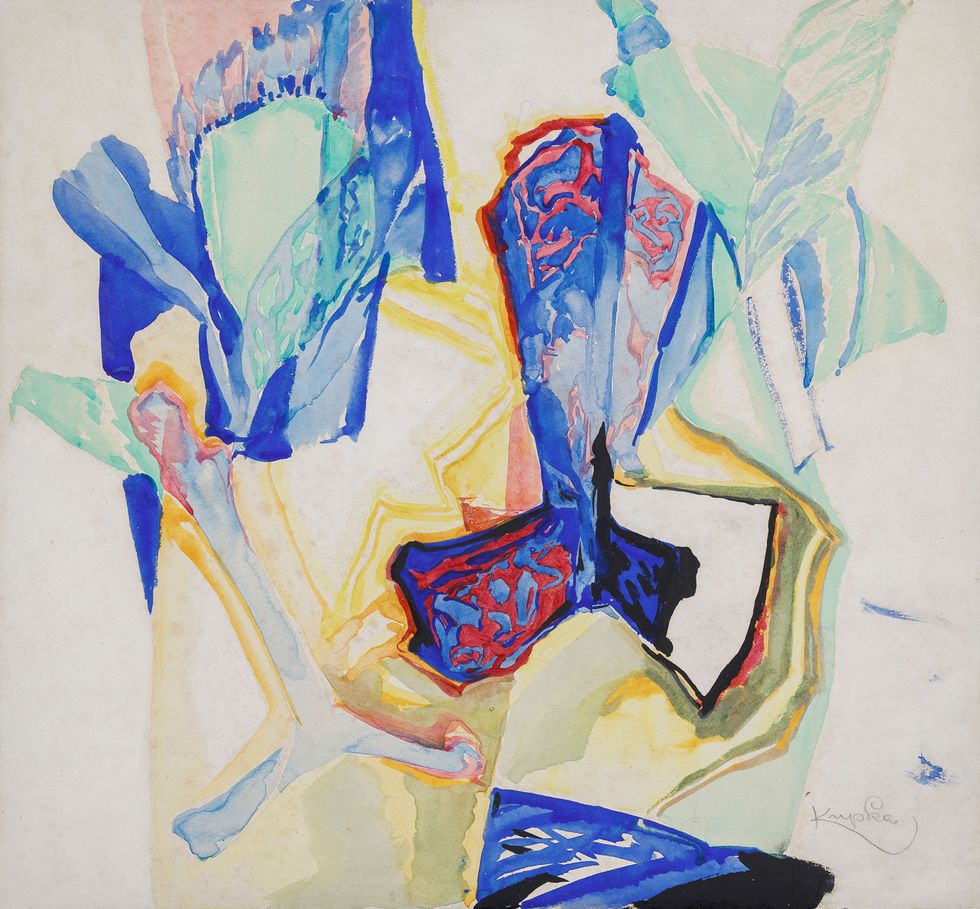
watercolor on paper
1913–1914
lower right
27.5 × 29.5 cm
framed, mounted, glazed
This painting improvisation by František Kupka comes from the most appreciated period of his work before the First World War, in which he created the most important founding works of modern art. Besides painting, Kupka studied biology, philosophy, physiology and medicine. Based on his research, he tried to create his own aesthetics, which he formulated in the essay Creation in the Plastic Arts, written in 1910. In it, he developed his ideas about the importance of science, new technologies (the invention of photography) and the impossibility of capturing objective reality. Like Wassily Kandinsky, Kupka analysed the arrangement, function, and meaning of points, lines, and colour. Based on these ideas, he arrived at abstraction in 1912, the first manifestation of which were the paintings Amorpha – Two-Color Fugue (National Gallery Prague, inv. No. O 5942) and Amorpha, Warm Chromatic (Kampa Museum), which became the very first abstract paintings exhibited at the Paris Autumn Salon of 1912. The painting titles such as amorpha, fugue and impromptu, which come from the musical dictionary, evoke several connections between Kupka’s work and Orphism, which the artist repeatedly rejected. Although he considered music a great means of sharpening the senses and evoking colourful visions, he condemned the contemporary analogy between colours and sounds, simplified under Orphism. For Kupka, colour became a significant element not only from an aesthetic point of view but especially for its spiritual and metaphysical content. The term impromptu means an instrumental composition based on improvisation. The presented work was owned by Galerie Karl Flinker in Paris, from where it was purchased by Galerie Louis Carré in Paris, which sold it to a private collection in 1982. The value of the painting enhanced its exhibition at Christie’s, London, in 2018 and in the permanent exhibition of the Kampa Museum (Kupka, Gutfreund, Masters of World Painting, Kampa Museum, December 2022 – September 2024). Assessed during consultations by doc. M. Theinhardt, CSc., and PhDr. E. Havlová. The expertise of PhDr. K. Srp is attached.
